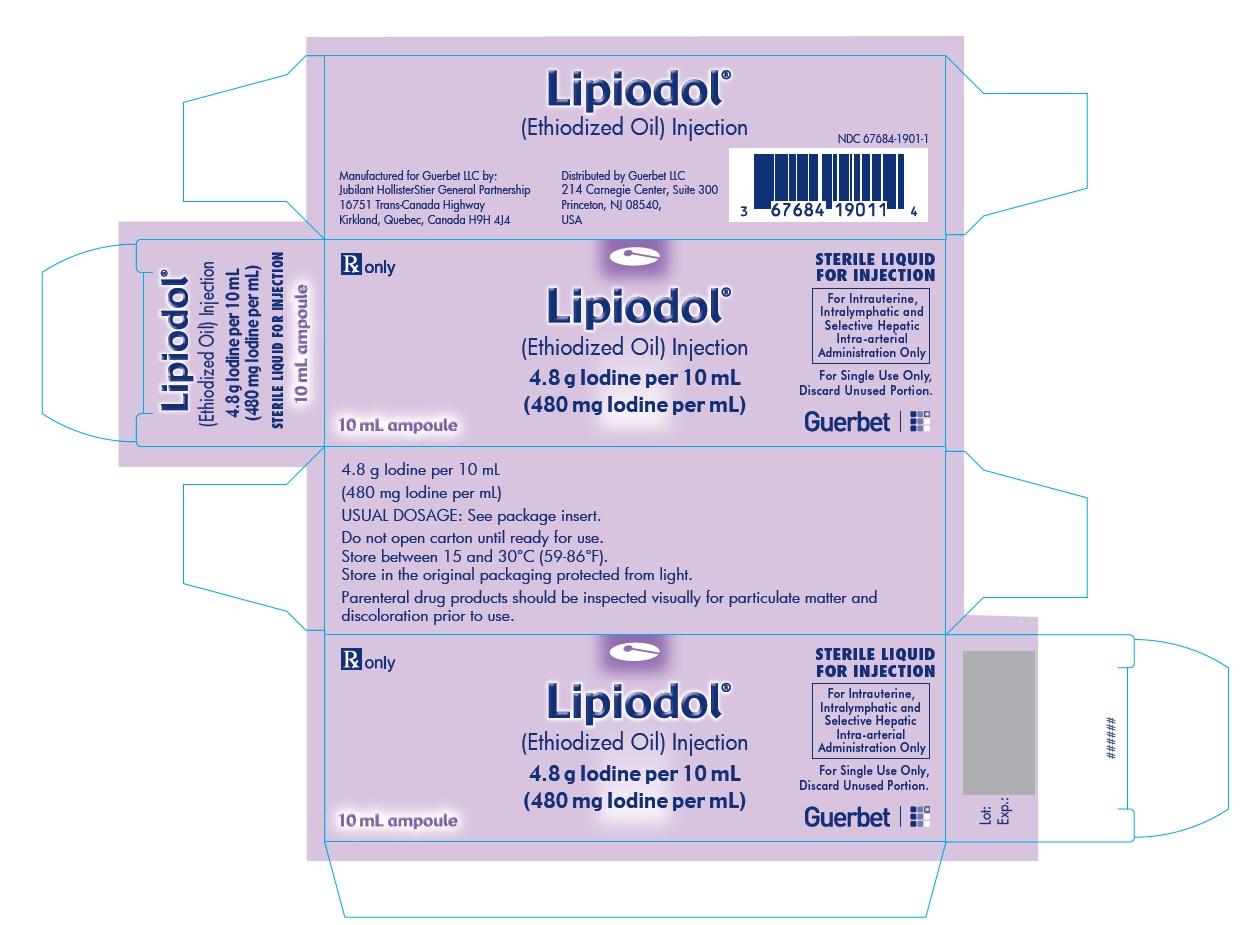FDA records indicate that there are no current recalls for this drug.
Are you a medical professional?
Trending Topics
Lipiodol Recall
Get an alert when a recall is issued.
Questions & Answers
Side Effects & Adverse Reactions
There is currently no warning information available for this product. We apologize for any inconvenience.
Legal Issues
There is currently no legal information available for this drug.
FDA Safety Alerts
There are currently no FDA safety alerts available for this drug.
Manufacturer Warnings
There is currently no manufacturer warning information available for this drug.
FDA Labeling Changes
There are currently no FDA labeling changes available for this drug.
Uses
Lipiodol is an oil-based radio-opaque contrast agent indicated for:
- hysterosalpingography in adults
- lymphography in adult and pediatric patients
- selective hepatic intra-arterial use for imaging tumors in adults with known hepatocellular carcinoma (HCC)
History
There is currently no drug history available for this drug.
Other Information
Lipiodol, ethiodized oil injection, is a sterile injectable radio-opaque agent. Each milliliter contains 480 mg of Iodine organically combined with ethyl esters of fatty acids of poppy seed oil. The precise structure of Lipiodol is unknown.
Lipiodol is a sterile, clear, pale yellow to amber colored oil. Lipiodol has a viscosity of 34 – 70 mPa·s at 20°C, and a density of 1.28 g/cm3 at 20°C.
Sources
Lipiodol Manufacturers
-
Guerbet Llc
![Lipiodol (Ethiodized Oil) Injection [Guerbet Llc]](/wp-content/themes/bootstrap/assets/img/loading2.gif)
Lipiodol | Guerbet Llc
![Lipiodol (Ethiodized Oil) Injection [Guerbet Llc] Lipiodol (Ethiodized Oil) Injection [Guerbet Llc]](/wp-content/themes/bootstrap/assets/img/loading2.gif)
2.1 Dosing GuidelinesDraw Lipiodol into a glass syringe.
Use the smallest possible amount of Lipiodol according to the anatomical area to be visualized.Hysterosalpingography
Using aseptic technique inject Lipiodol into the endometrial cavity with fluoroscopic control. Inject increments of 2 mL of Lipiodol until tubal patency is determined; stop the injection if patient develops excessive discomfort. Re-image after 24 hours to establish whether Lipiodol has entered the peritoneal cavity.
Before using Lipiodol exclude the presence of these conditions: pregnancy, uterine bleeding and endocervicitis, acute pelvic inflammatory disease, the immediate pre-or postmenstrual phase or within 30 days of curettage or conization.
Lymphography
Inject Lipiodol into a lymphatic vessel under radiologic guidance to prevent inadvertent venous administration or intravasation.
Adults:
unilateral lymphography of the upper extremities 2 to 4 mL unilateral lymphography of the lower extremities 6 to 8 mL penile lymphography 2 to 3 mL cervical lymphography 1 to 2 mLPediatric patients:
Inject a minimum of 1 mL to a maximum of 6 mL according to the anatomical area to be visualized. Do not exceed 0.25 mL/kg.The following method is recommended for lymphography of the upper or lower extremities. Start the injection of Lipiodol into a lymphatic channel at a rate not to exceed 0.2 mL per minute. Inject the total dose of Lipiodol in no less than 1.25 hours. Use frequent radiologic monitoring to determine the appropriate injection rate and to follow the progress of Lipiodol within the lymphatics. Interrupt the injection if the patient experiences pain. Terminate the injection if lymphatic blockage is present to minimize introduction of Lipiodol into the venous circulation via lymphovenous channels. Terminate the injection as soon as Lipiodol is radiographically evident in the thoracic duct to minimize entry of Lipiodol into the subclavian vein and pulmonary embolization. Obtain immediate post-injection images. Re-image at 24 or 48 hours to evaluate nodal architecture.
Selective Hepatic Intra-arterial Injection
Determine the dose depending on the tumor size, local blood flow in the liver and in the tumor(s).
Inject from 1.5 to 15 mL slowly under continuous radiologic monitoring. Stop the injection when stagnation or reflux is evident. Limit the dose to only the quantity required for adequate visualization. The total dose of Lipiodol administered should not exceed 20 mL. 2.2 Drug HandlingInspect Lipiodol visually for particulate matter and discoloration before administration. Do not use the solution if particulate matter is present or if the container appears damaged. Lipiodol is a clear, pale yellow to amber colored oil; do not use if the color has darkened.
Draw Lipiodol into a glass syringe and use promptly. Discard any unused portion of Lipiodol.
Login To Your Free Account


